February 6th, 2023
You know an event has to be good when someone who is not a part of the event’s culture enjoys it, and such was the revelation by the Princess of Patience as she walked out of the 18th Century Artisan’s Show after three hours. Our Brooklyn-bred, pavement loving, city-slicker Princess had mingled with the nicest, friendliest, kindest, salt of the earth people at the Carlisle Expo Center and come out smiling. As she always does.
This show, the 18th Century Artisan’s Show, is all about black powder firearms and related accoutrements, longrifles, 1700s period clothing and related materials, horn and tin mugs, bone handled forks, wood and leather items. All made by hand here in America, many in Pennsylvania.
For a guy like me, not of pavement or city, a show like this is an assumed success before I even set foot in it. This year was the best ever, however, and when I left on Friday afternoon it was absolutely thronged and jam packed with people. If I had another couple hours to spend there, it would have been time well used. After all, there was a new possibles bag to find, and none of what I had yet seen fit my need. The Leatherman is a good stand-by source for rugged and large possibles bags, and as I already use two made by Gary Fatheree, I was in the hunt for a bag with more flair, more color, more personality.
Problem is, all of the pizazz bags are the size of my shoe. Like, it doesn’t seem possible that anything more than a short starter and a ball bag will fit in there. And if there is one thing I want a possibles bag to do, it is to hold all of the possibles I might need, including the kitchen sink. (“possibles” include all of the stuff needed to load and clean a muzzleloading firearm)
This had to be the best 18th Century Artisan’s Show ever, because it was the most filled with cool stuff, the best laid out, and the best attended by artisans and the public alike of all prior shows. The old venue was the Country Cupboard in Lewisburg, PA, and it was kind of tight quarters, with too many passageways and steps, and a requirement that you walk outside to the next building to see more vendors. At the Carlisle site, it is just one gigantic room, with all of the vendors spread out and visible. Best possible situation.
The only “thing” missing at the show was “Yesteryer,” that big huddle of fabrics and mannequins, bonnets and shoes, leggings and pants, waistcoats and longcoats, all of weird hand-ground linens and free range flax and slow roasted tweed, and all of the related 18th century clothing accoutrements that seamstress extraordinaire Barb Shaputis could assemble on the fly as she outfitted entire regiments of reenactors across America. Barb made my own 18th century longcoat for me, absolutely perfectly, with the “RR” buttons for the Rogers Rangers outfit well represented in the Netflix show “Turn.” I wear it every flintlock season, but thankfully, without a tri-corner hat. I have not (yet) gone that far. Barb is no longer with us to sell or make me a tri-cornered hat, and so that part of my life will be left unfinished as a memorial to sweet Barb.
Below are some photos I took of this year’s show. Like a kid in a candy store, I could easily have spent both days there. But then again, the Great American Outdoors Show is in full swing now, here in Harrisburg. So many fun choices! Thank you to all of the fantastic vendors at the 18th Century Artisan’s Show, many of whom are by now my acquaintances or friends. They not only make beautiful things, they also gather up all of their stuff and make long drives to Lewisburg, now Carlisle, and other venues, to give us historically-afflicted people the opportunity to switch gears and live life a little slower and lot cooler than usual.
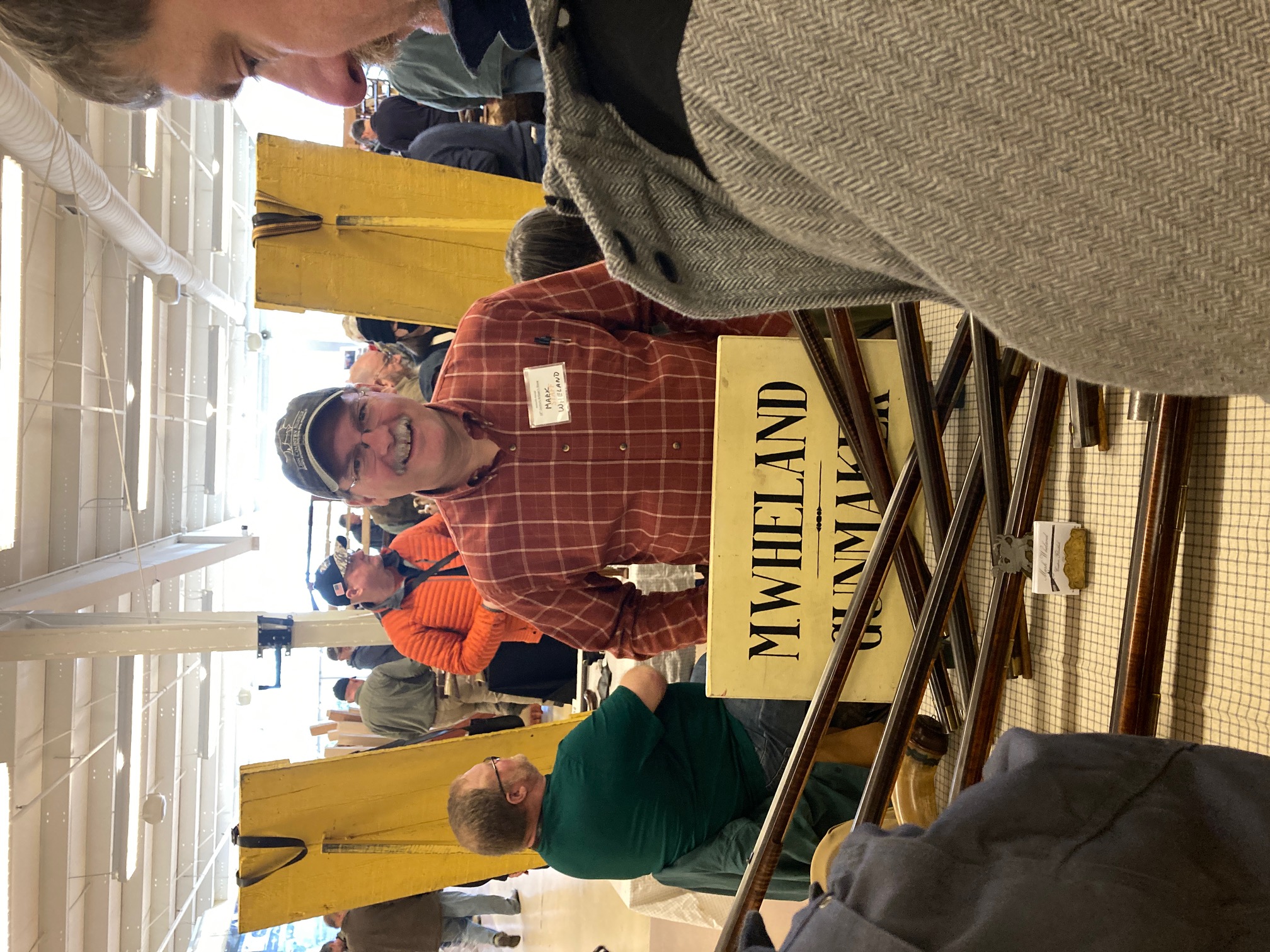
Gunmaker and president of the Kentucky Longrifle Association, Mark Wheland is a central Pennsylvania artist who has made a beautiful rifle for me. I grew up trapping muskrats on his dad’s farm.

Brad and Shane Emig of York County are known worldwide for their exacting historical work, including making long rifles from complete scratch.
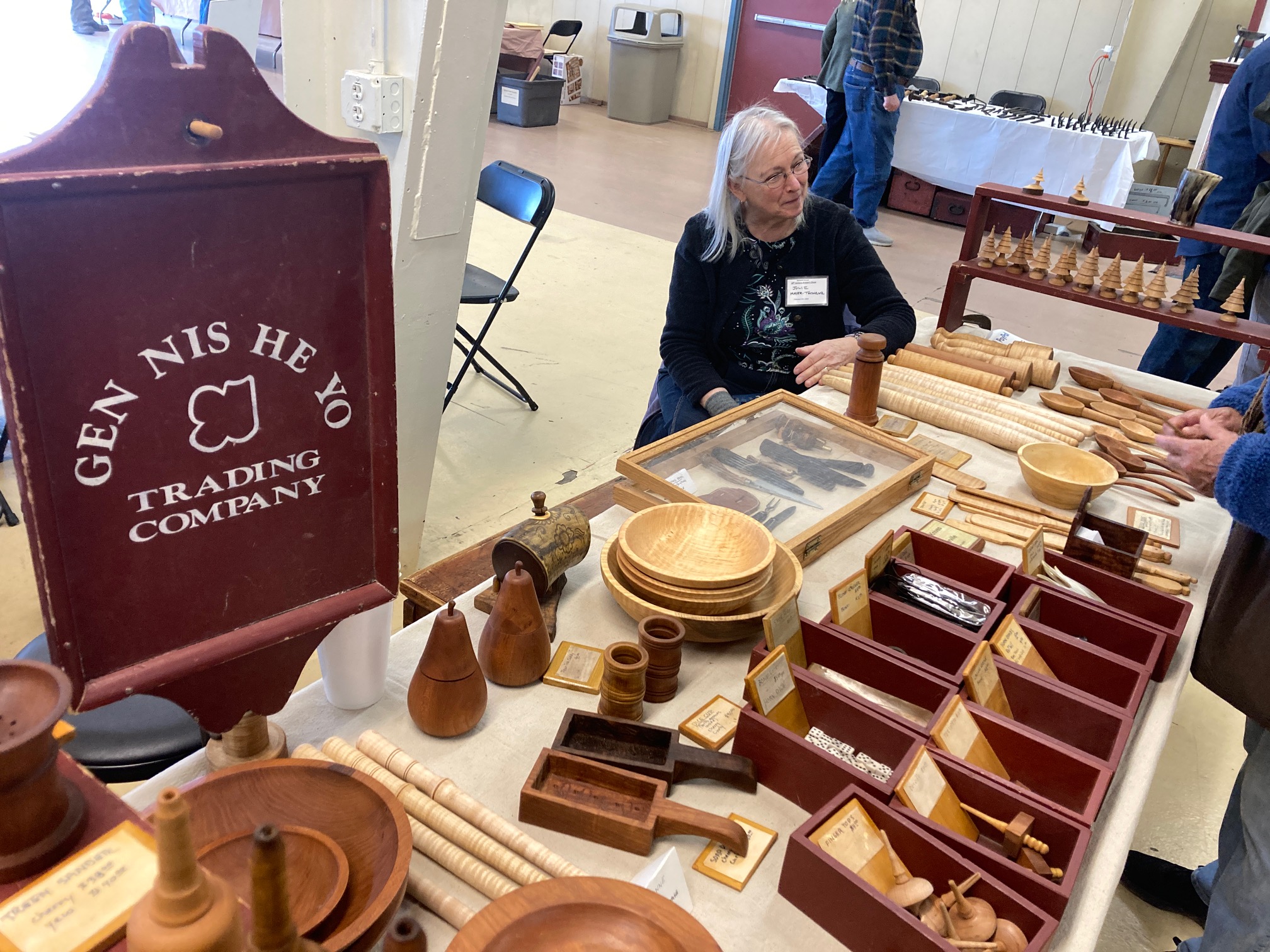
From Rochester New York hails Irv Tschanz, his lovely wife, and Jim Dell, purveying all kinds of beautiful hand-made crafts from leather, wood, horn, and metal

Jymm Hoffman sold me my anvil from a special run he had poured at a Pittsburgh foundry about ten years ago.

Here artisan Jim Dell measures the first wallet he made for me in preparation for making a replacement. Jim has also made our family double thick belts, a belt axe and carrier, and other “Olde Tyme” things we enjoy so very much.

The Leatherman is a big fixture in the black powder world, with founder Gary Fatheree (left) offering all kinds of high quality possibles bags, gun sleeves, cow’s knees, and other items from rare leathers. Clayton Miller(right) is the new proprietor with big shoes to fill
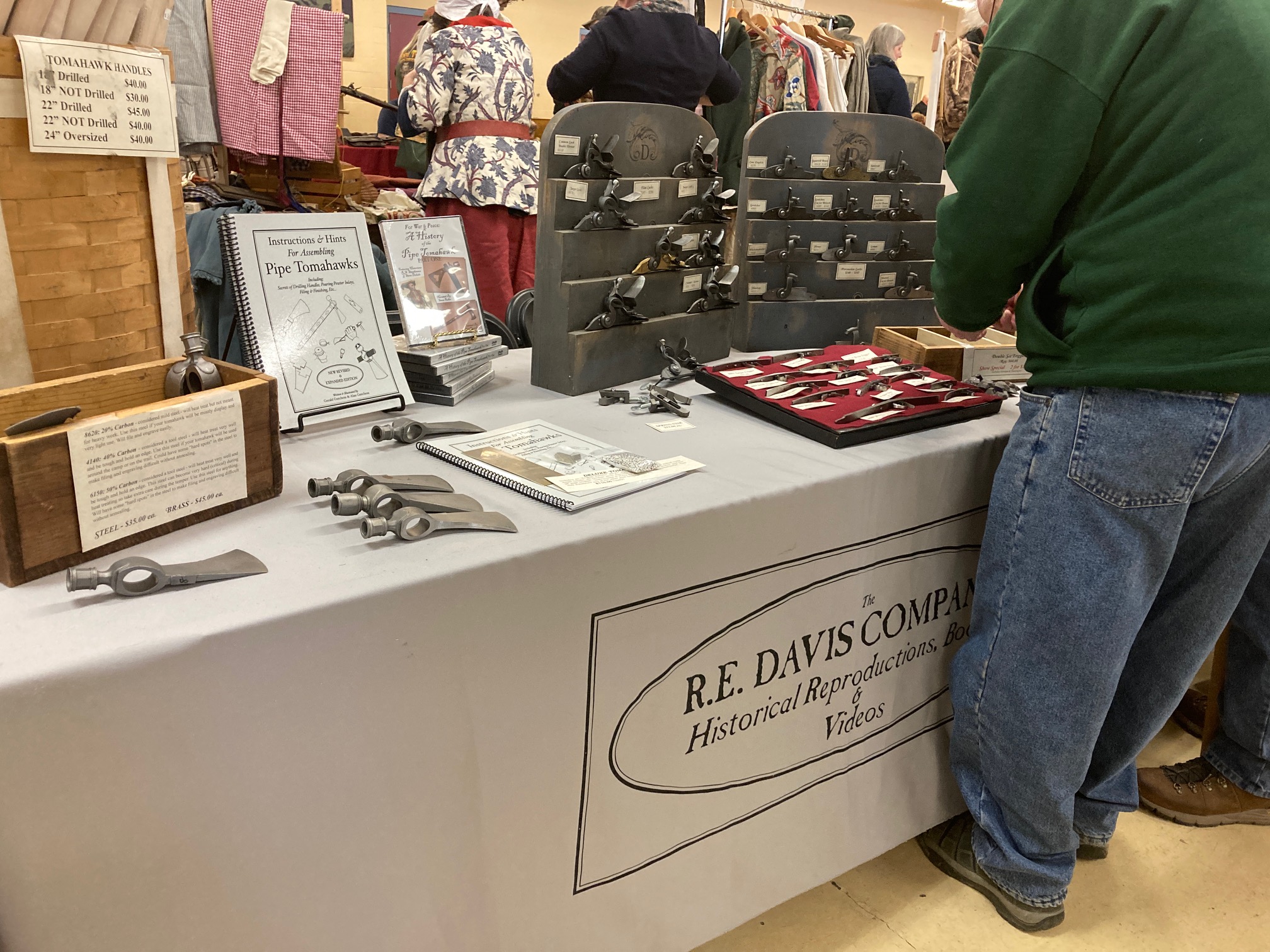
R.E. Davis makes highest quality locks and triggers, like Jim Chambers, whose booth I did not see.
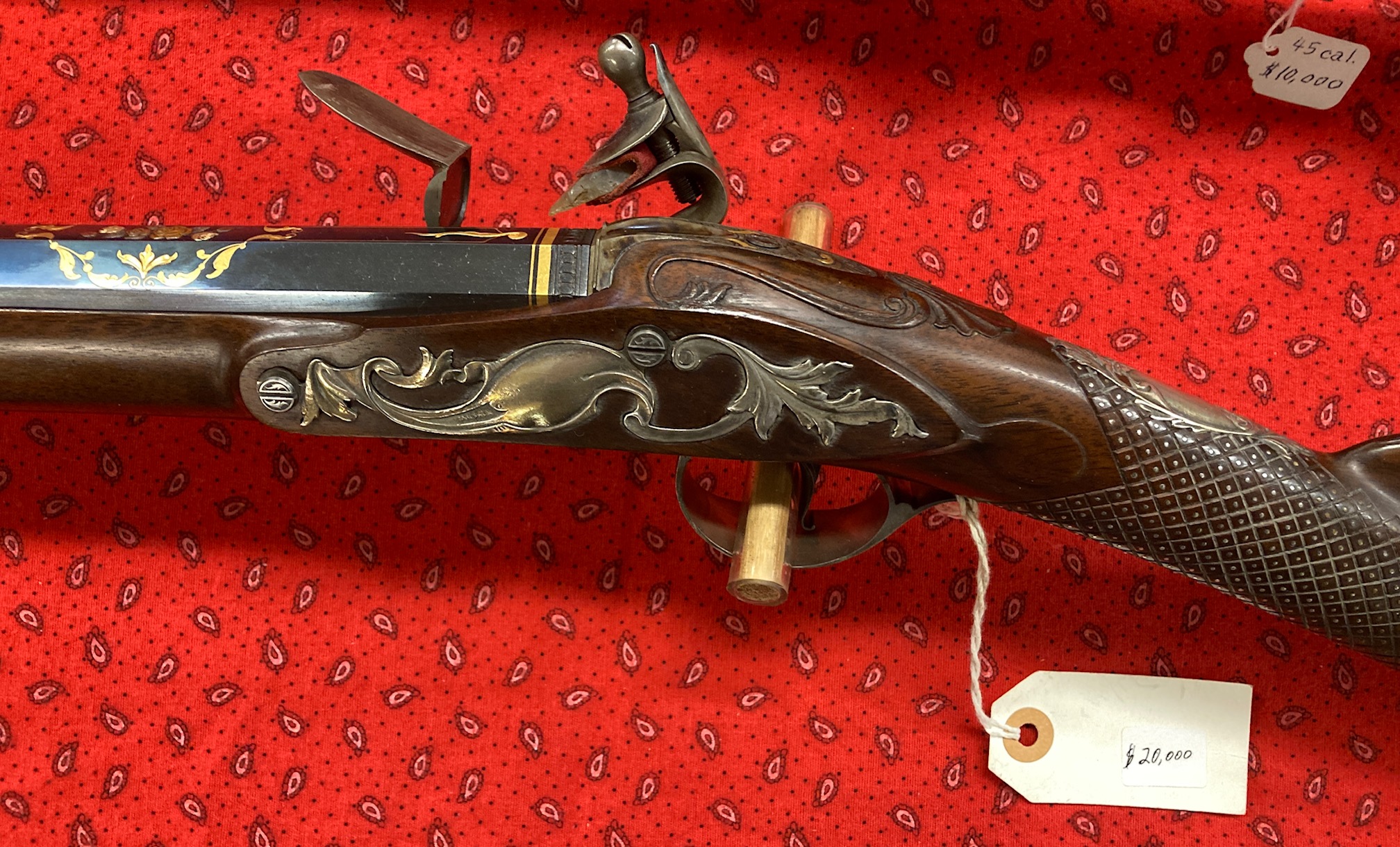
A beautiful rifle for sale with a price tag demonstrating that many firearms are a bridge between art and utility, uniquely blending form and function.
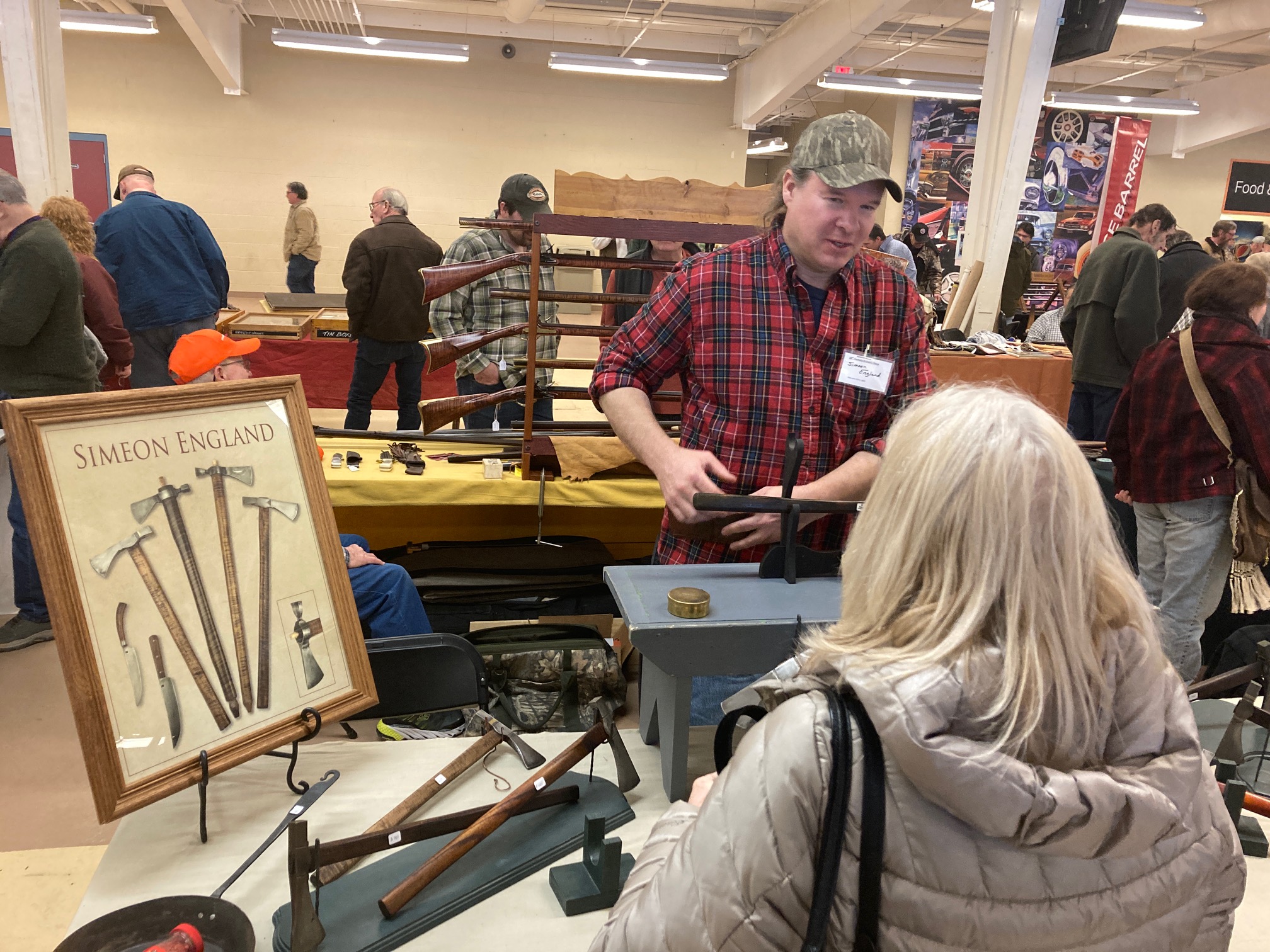
Blacksmith Simeon England makes beautiful tomahawks and knives.
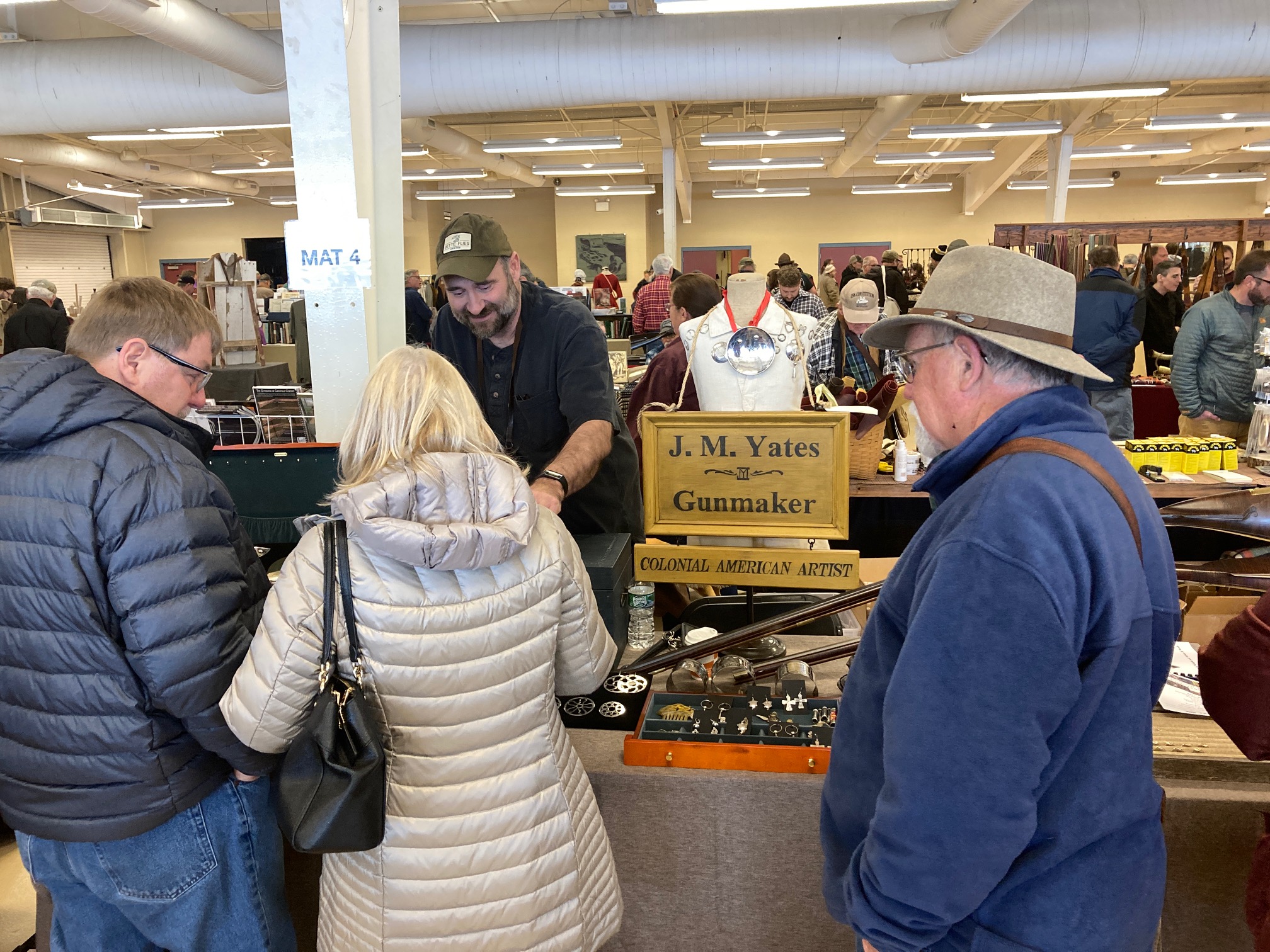
Long Islander Mitch Yates has that whole corner of America to himself. Honestly, is there a gunbuilder artisan of Mitch’s caliber anywhere in New England or eastern New York? I don’t think so. Nice guy, too.
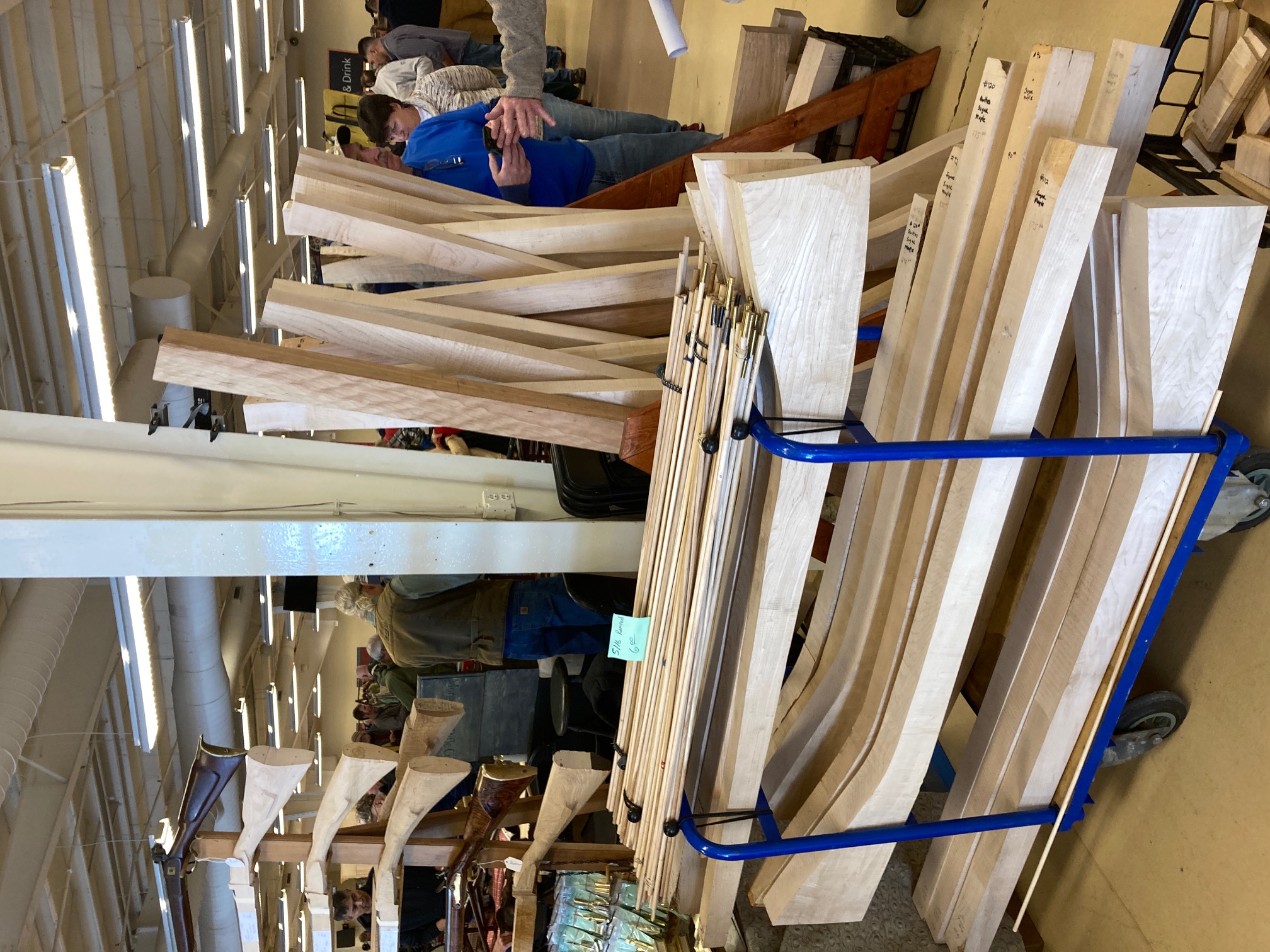
You can pick out a fancy gunstock and a nice straight ramrod from a myriad of choices. The problem is saying “I have enough already”
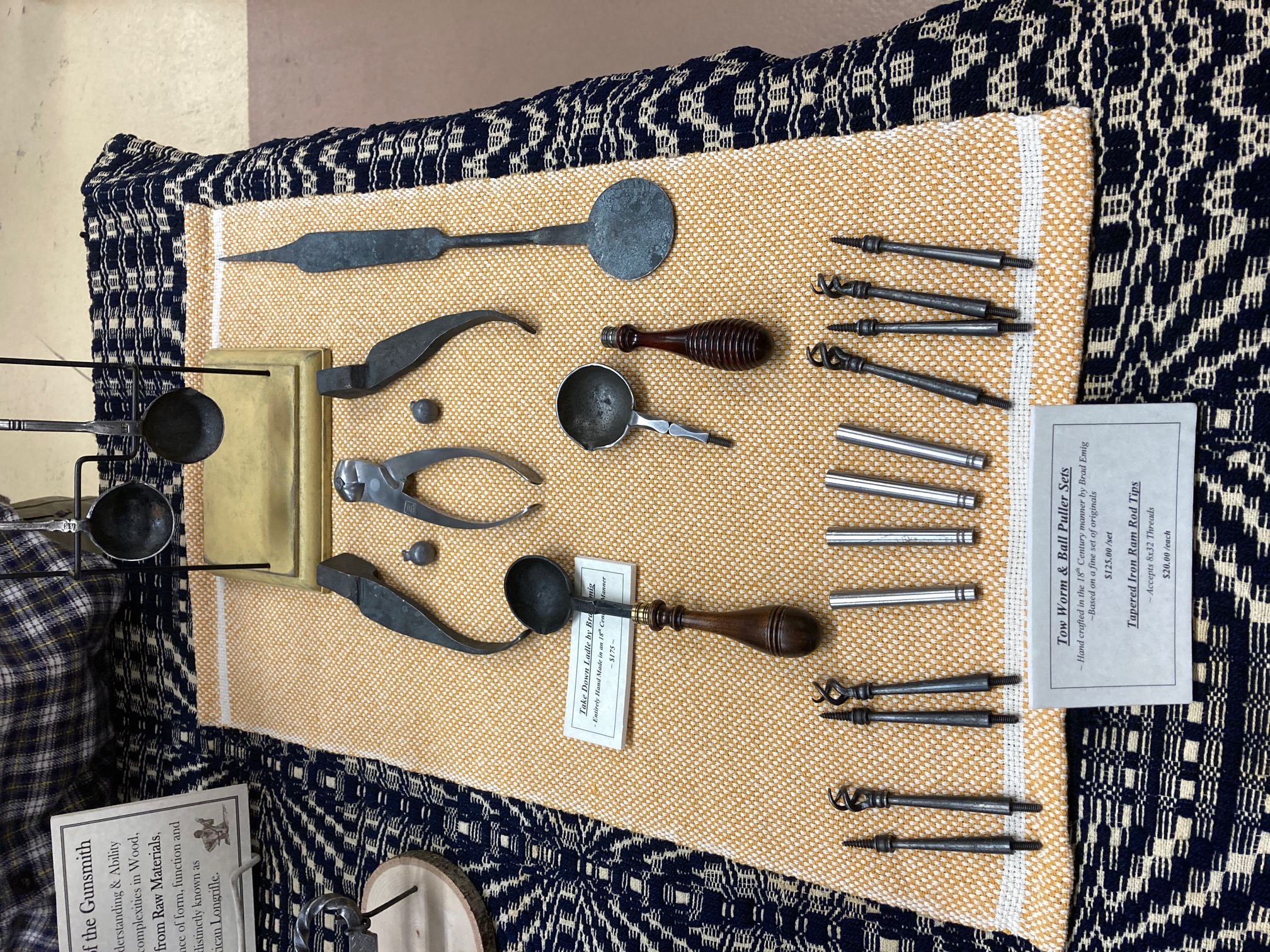
Historically accurate black powder tools and serving utensils for sale, probably made by Shane Emig of York County
By Josh • Posted in
Family •
No Comment
December 30th, 2020
Last Saturday Pennsylvania’s flintlock deer season started. A surprising number of people take to our winter woods with primitive flintlock rifles in pursuit of super skittish deer. After two weeks of rifle season, which ended two weeks ago, our deer are as wary as possible. They are either burrowed into hillsides, or yarded up in suburban back yards, hiding from anyone that looks like a hunter. Deer are surprisingly good at separating people shoveling snow from people carrying rifles, so you might see a pile of deer in the oddest places right now.
Flintlocks involve pouring gunpowder down the barrel, followed by a small piece of cloth and a round lead ball. Then a small amount of fine gunpowder is put into the flash pan, and is then hopefully ignited when a piece of flint hits a piece of steel, thereby making sparks, ultimately igniting the powder that was poured down the barrel. That pushes out the lead ball with enough force to kill an animal.
This is the theory, anyhow.
Because there are a bunch of moving parts in a flintlock, each one of which is necessary for the whole to function properly, a lot of things can go wrong after the trigger is pulled. Here are a few problems that happen to flintlock hunters every year, and some suggestions on what flintlock hunters can do to fix the situation up front, before the trigger is pulled on a deer and the gun does not go “BANG.”
Problem One: Flint does not spark well or at all.
Solution one: Make sure the flint has a sharp edge; after lots of practice shooting, the flint edge gets chipped and dulled. If yours is dulled, then replace it with a new one, or re-sharpen the edge with a piece of steel.
Solution two: Ensure the frizzen is clean and dry; if it is oily or wet, it will not spark.
Solution three: Ensure the flint squares up exactly with the frizzen. The two must meet one another directly and perfectly aligned so that the flint edge scrapes evenly down the frizzen face. If only a corner of the flint connects with the frizzen, then very few sparks will result. This is probably the most common mistake associated with no or poor sparking.
Solution four: Ensure your lock is properly tuned and timed. This is both easier and harder than it sounds. It is common for people to buy inexpensive off-the-shelf flintlocks (especially the really cheap plastic and stainless steel ones) and expect them to work at the same high level of functionality that a comparable budget-level center fire rifle operates. This is misplaced trust, because unlike a modern rifle, a flintlock’s lock is full of tumblers, bars, levers, and springs, all moving in precise harmony with one another in a millisecond. If any of these moving parts is not tuned to work smoothly with the other moving parts, then your lock will have timing issues. You will pull the trigger, and only small hints will tell you that something is wrong, like hang fires, or many failures to ignite the flash pan powder. But each time you pull the trigger, you will not hit your deer. After a lot of heartache, you will eventually ask a competent flintlock expert to evaluate your gun’s issues, and he will immediately diagnose it as “Your lock don’t work.”
It is important to use only a trained flintlock gunsmith, and not a regular “gunsmith.” Most modern gunsmiths know as much about a flintlock as they do about maintaining mechanical Swiss watches, which is absolutely zero. Many modern gunsmiths will sell themselves as being able to do the work on a flintlock, but they will be overwhelmed when they pull the lock plate off and behold the incredible “primitive” inner machinery. I have seen a modern gunsmith actually destroy either the lock mechanism or the inletted stock wood, or both, so only take your gun to an actual flintlock gunsmith, and an experienced one at that. Here in Central Pennsylvania, we are super fortunate to have a lot of flintlock experts, including people at Dixon’s near Lenhartsville, and Fort Chambers in Chambersburg, Mark Wheland in eastern Huntingdon County, and many, many others sprinkled around.
When I had my first flintlock made, the new “gun builder” I hired actually ground off critical pieces of the lock, and then tried to blame me when the gun would not fire properly. It cost me a deer. I also had to pay Bill Slusser (now in Kentucky) $220 dollars to rebuild the lock and then properly re-attach it to the wood, which included him TIG welding back on metal that had been unnecessarily removed by the first guy. The lock is a delicate piece of machinery, and the bargain basement ones are very rough, so take your new gun to a competent flintlock gunsmith to get it tuned before you take it hunting. If you bought your flintlock new from a gunmaker, like Mark Wheland or Bill Slusser, then it is guaranteed to be fully tuned and ready to kill. Same goes if you had a gun custom built for you. Just don’t use the bargain basement “gun builder” guy who promises a quick turnaround, or a regular gunsmith who says “Yeah, I can do those.” They can’t do it, but they can do it in.
I learned that expensive lesson so you don’t have to.
Happy hunting and good luck!
By Josh • Posted in
Family •
No Comment











